
For a better understanding of curved stair design, read the information below regarding circular stair classifications and standards. This information will not be specific to an individual design, rather guidelines and generalities that will help architects and designers organize preliminary direction regarding their stair plans.

A radius is the distance from a center point, or pivot point, to an arc or curve. When this center point is used to strike an arc traveling 360 degrees, it will produce a perfect circle. The diameter of the circle will be exactly double the radius.
A circular staircase utilizes a large radius coupled with a somewhat smaller radius. These two curves commonly share the same center point. The distance between the two curves (radii) creates the width of the staircase. A spiral staircase utilizes a center support post with the stair treads arranged much as the spokes of a wagon wheel would be around the hub. While a circular stair can also be called a "curved" stair, the spiral stair is a vastly different design usually reserved for very limited spaces. Spiral stairs can only be used as secondary stairs in limited applications. A circular stair will meet code when designed and built properly. An elliptical staircase is built from a totally different geometry than a circular or spiral. While the circular and spiral designs have a center point and consistent curvature, the elliptical design has a complicated, ever-changing curvature that uses multiple axis and focus points. While an elliptical design technically is a curved stair, a distinction between circular and elliptical must be made.

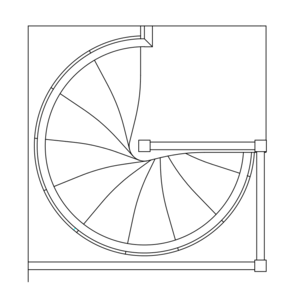
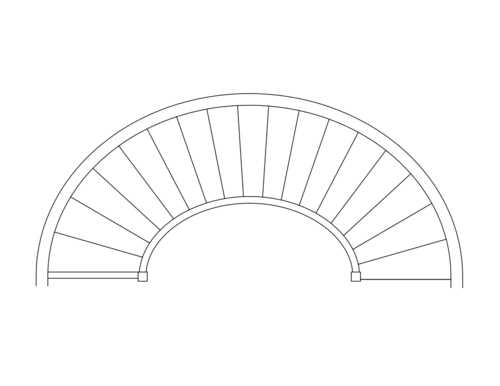
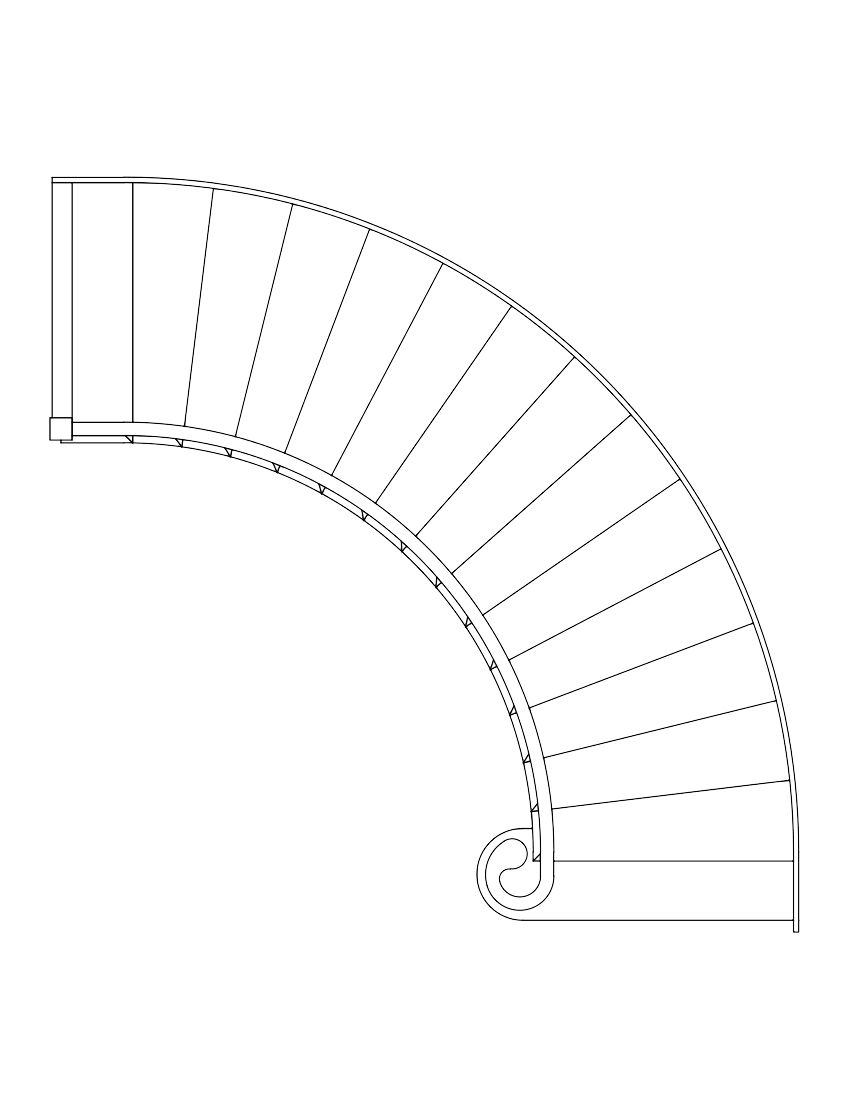
A standard 90 degree circular staircase will have a curved section of stair that travels 90 degrees from the top to the bottom. The inside radius (smaller) and the outside radius (larger) are formed from a common center point or "pivot point". The treads are then equally distributed Read more …by dividing 90 degrees by the number of treads needed. Our example staircase has 13 treads within the 90 degree section, so each tread is divided at 6.92 degrees individually. The depth of each tread on a circular staircase is measured 12 inches onto the stair from the inside of the handrail. At this point, the tread must have a "tread run" of at least 10 inches from riser to riser in most areas. A standard 90 degree circular stair may have one or two "straight" or standard treads at the top or the bottom to allow for rail fittings to be used (goosenecks or volutes, etc.). This design provides geometric consistency which allows for a well-designed handrail system and economic fabrication.
Read less …
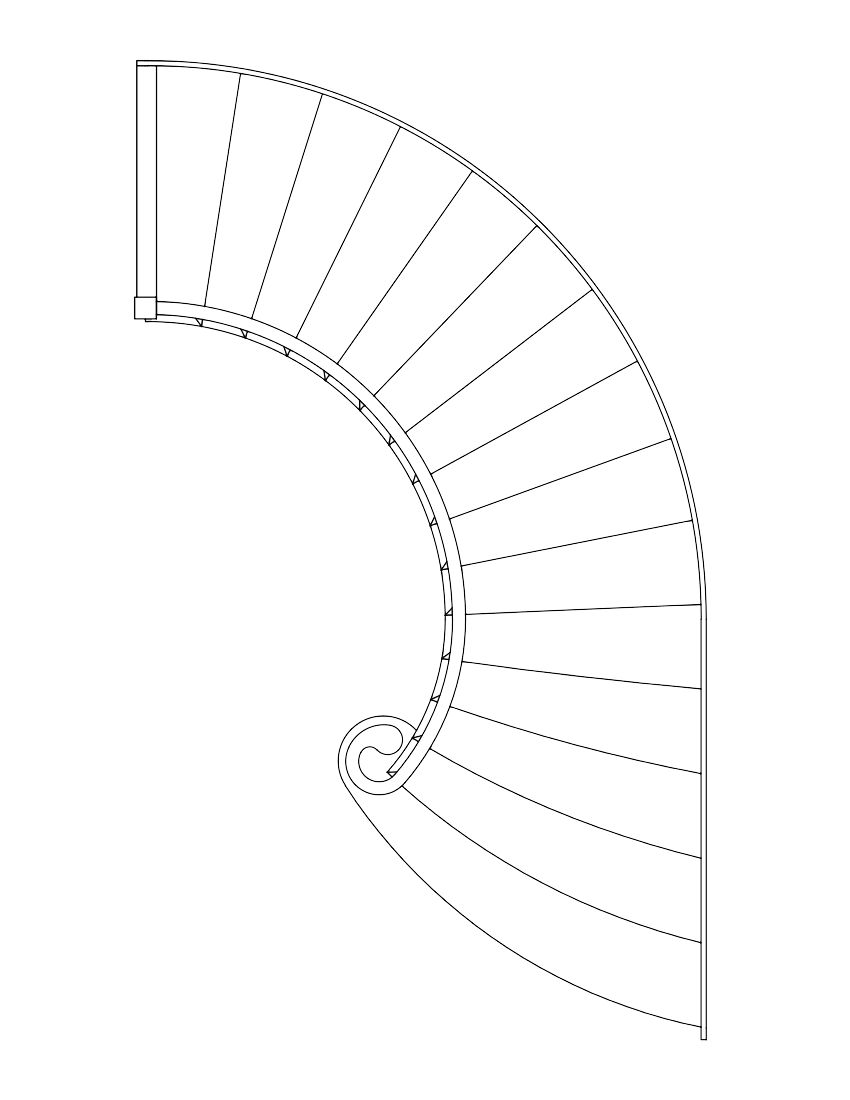
The compound radius circular staircase is designed along the same basis as the standard 90 degree type, but with a change of radius somewhere within the staircase. The design will therefore have multiple pivot points positioned at points of tangency to create smooth, Read more …flowing lines. Our example staircase uses a smaller radius near the bottom of the stair to create an approach that faces to the center of the foyer. The five bottom treads have been "bowed" in order to add effect and pull the overall stair back from the front of the structure. Compound radius staircases can be used to position stairs into exact locations. Hand carved rail fittings may be required, which adds to the overall cost of the stair.
Read less …
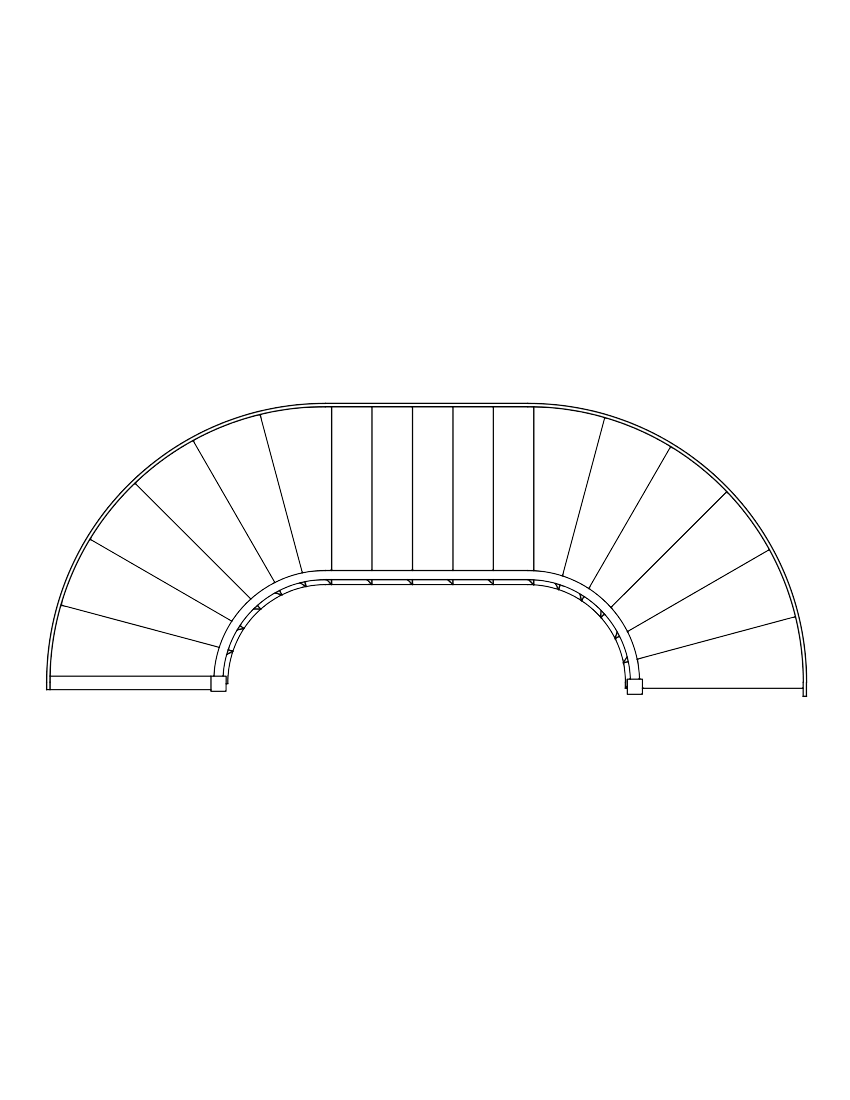
The 'U'-shaped circular staircase is often fit into a rectangular opening similar to a landing or winder stair. U-shaped circular stairs require a very tight radius that must be closely adjusted to accommodate building codes for tread size. Read more …The use of standard treads within the stair design will change the angle of ascent and require the use of hand carved rail fittings, which add cost to the overall design. Our example stair requires the use of four hand carved rail fittings while changing the rail angle from 50 degrees, to 37 degrees, then back to 50 degrees. Along with the J-shaped circular staircase, the U-shaped stairs are known for their artistic visual appeal instead of the smooth flow of larger stair types.
Read less …

The bottom three treads can be bowed for a welcoming effect.
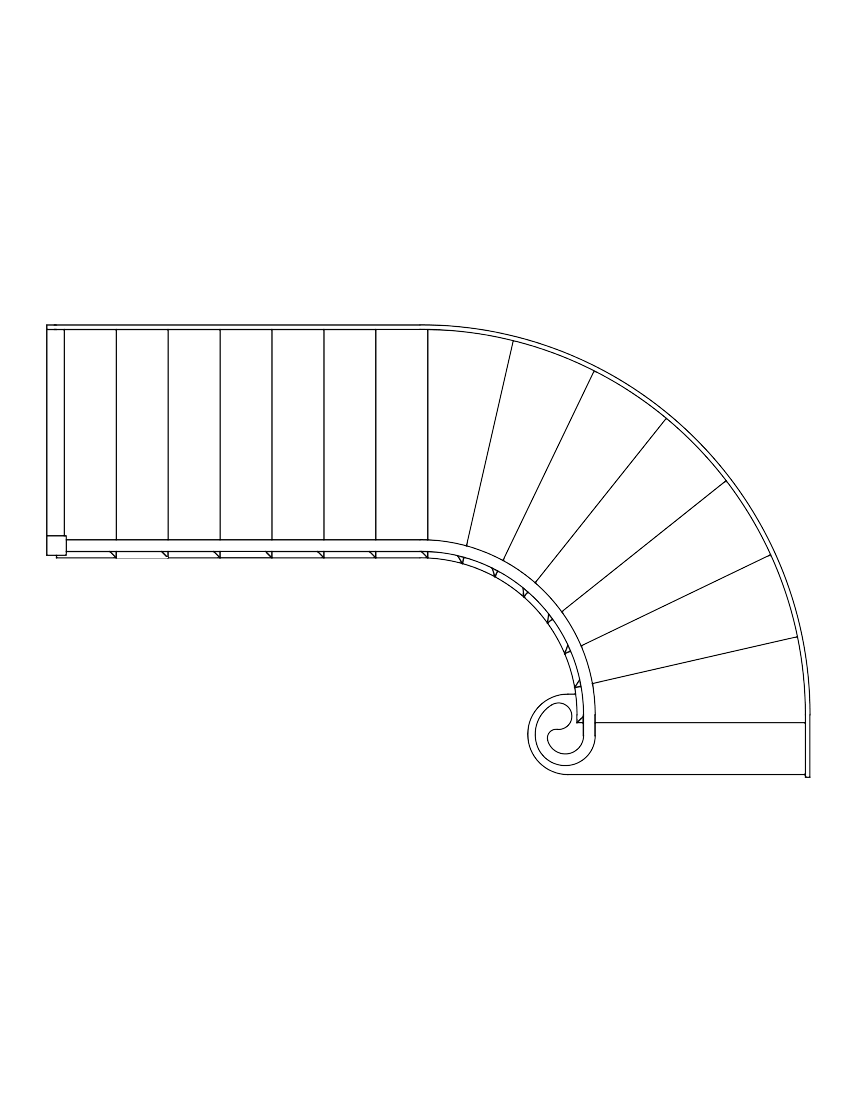
The 'J'-shaped circular staircase is generally used where space for a more suitable design in not available. Although this stair type is common, it does not offer the geometric consistency to produce smooth lines for the rail Read more …system. The standard treads at the top of the stair produce a 37 degree angle, while the curved treads near the bottom of the stair produce a 48 degree angle. This change in the angle of ascent will require a hand carved overhand easing in the railing that interrupts the visual flow of the rail. Our example stair would require two hand carved fittings in the rail, which adds cost to the overall stair. Despite the changing lines of the 'J'-shape stair, it can be visually effective.
Read less …

Eliminating the large radius circular stringer allows the treads continue into the framed corners of the stairwell. This creates an entirely different visual of the same stair design and allows for the placement of art objects in the corners.
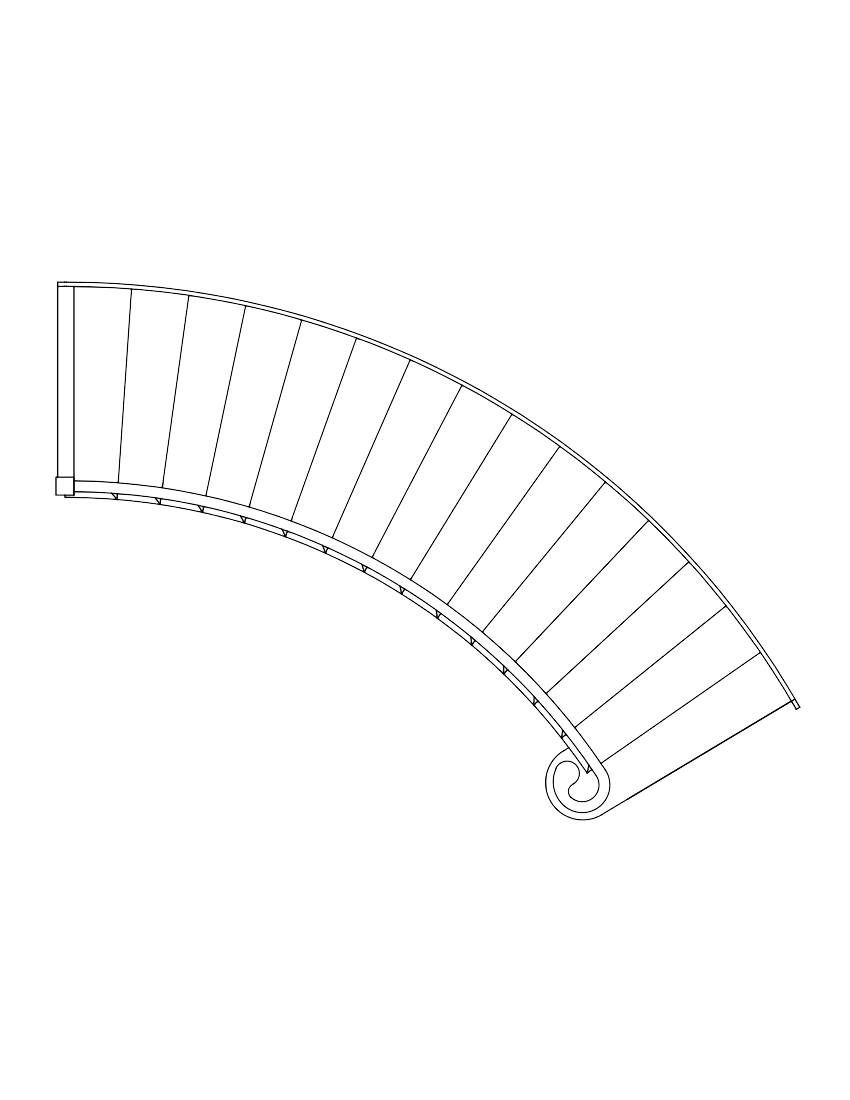
The large radius circular staircase offers the most efficient option for fabrication, spatial and handrail considerations. The large radius allows the stair to be set on one side of the foyer, allowing ample space for pass through traffic. Read more …The stair is very comfortable for the user and usually less costly for fabrication due to the geometric consistency of the design.
Read less …
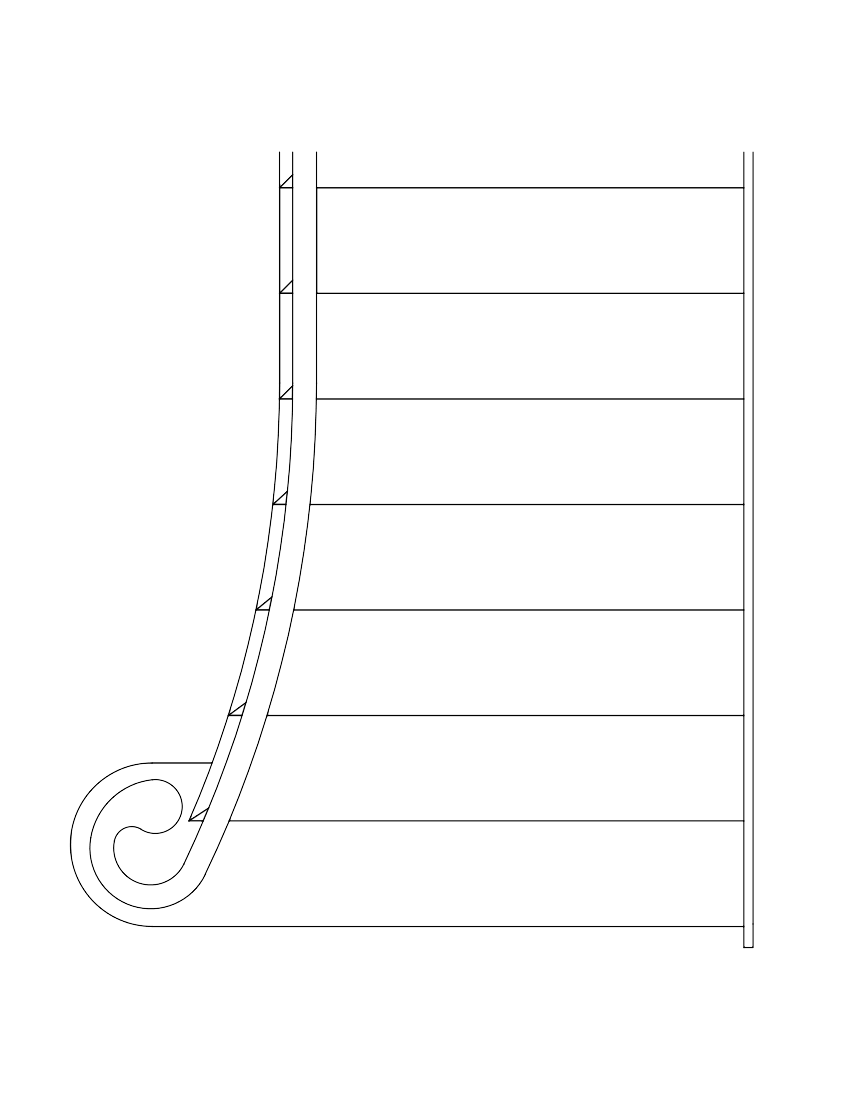
The flared bottom staircase is the most commonly used of all circular designs. A standard straight or landing staircase can have a radius added to the bottom of the stair, allowing it to widen at the starting tread. This simple design creates a welcoming effect at the bottom of the stair. Read more …This "widening" usually adds 12 inches to the width at the bottom of the stair, or 24 inches for double open staircase.
Read less …
Installing throughout the greater Chicago area; Selling to all 50 states
Designed Stairs
Showroom (by appointment only), Shop, and Offices
1480 E Sixth Street
Sandwich IL 60548
815-786-7600